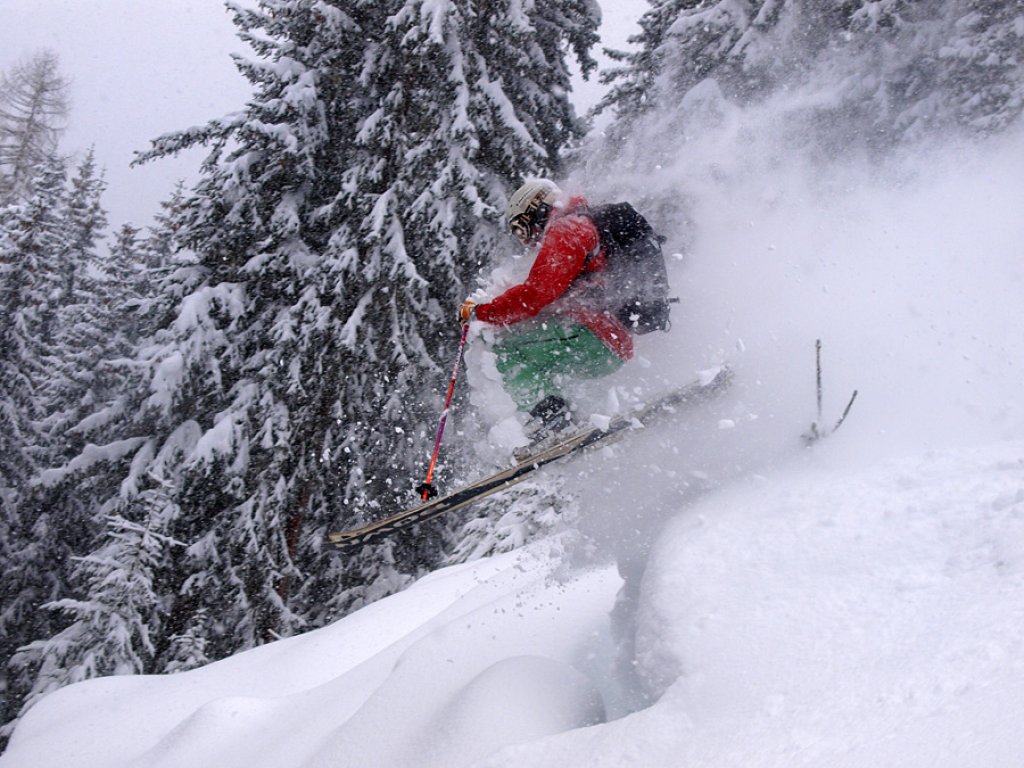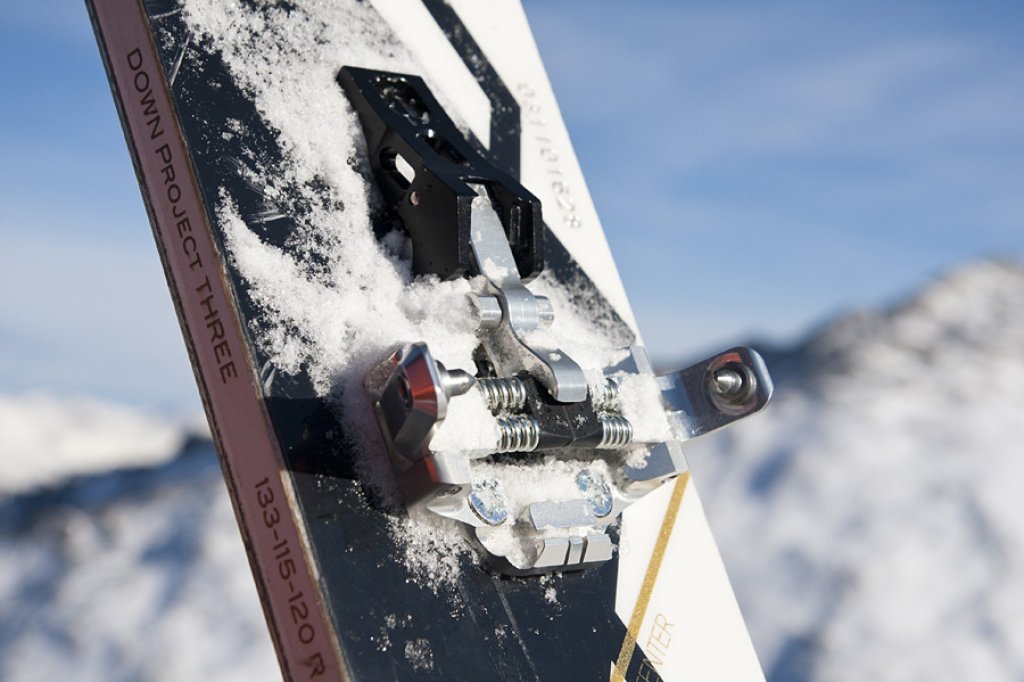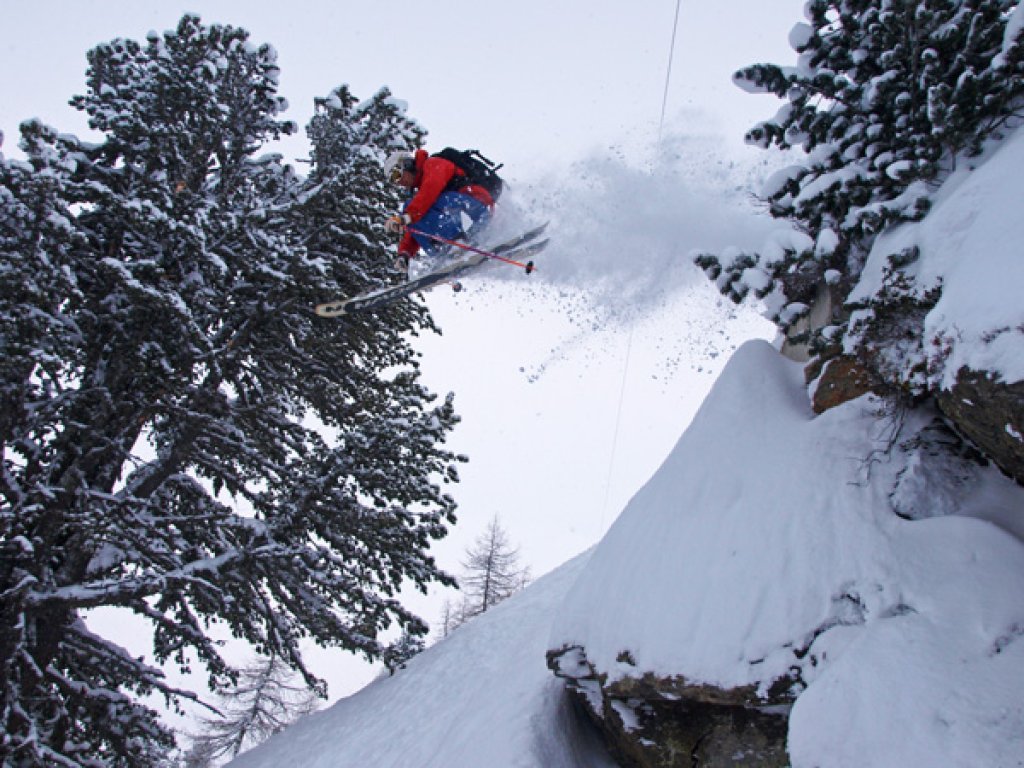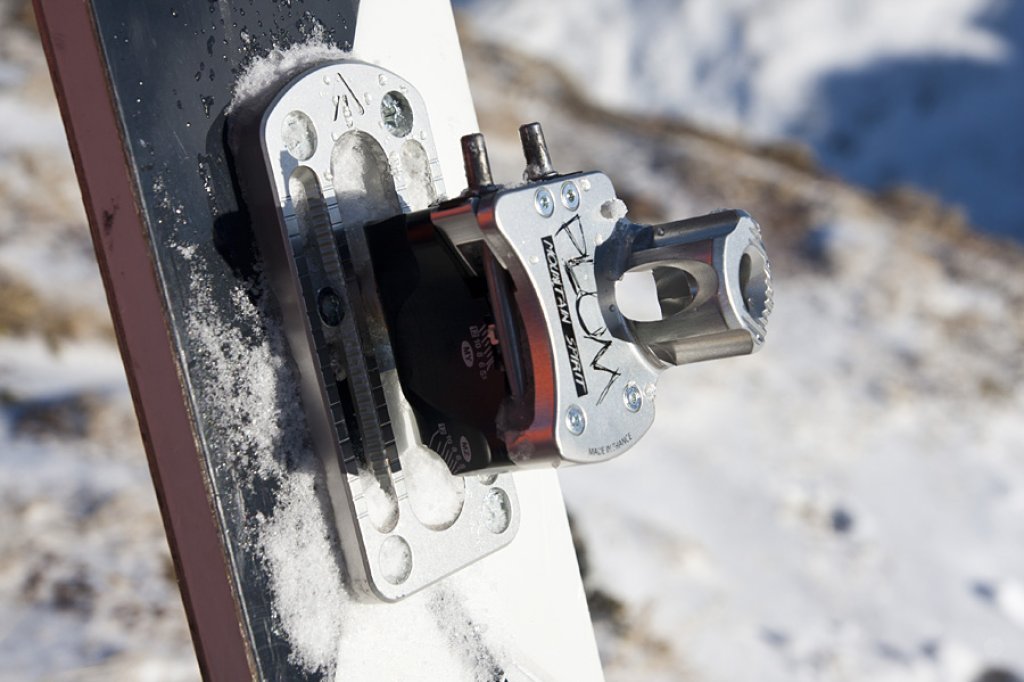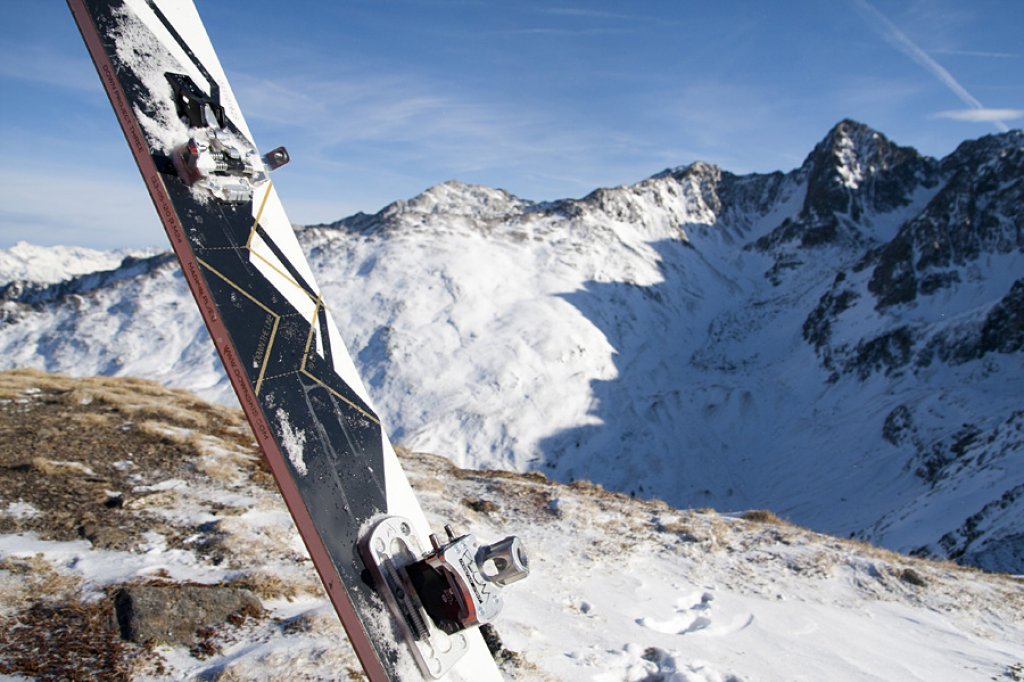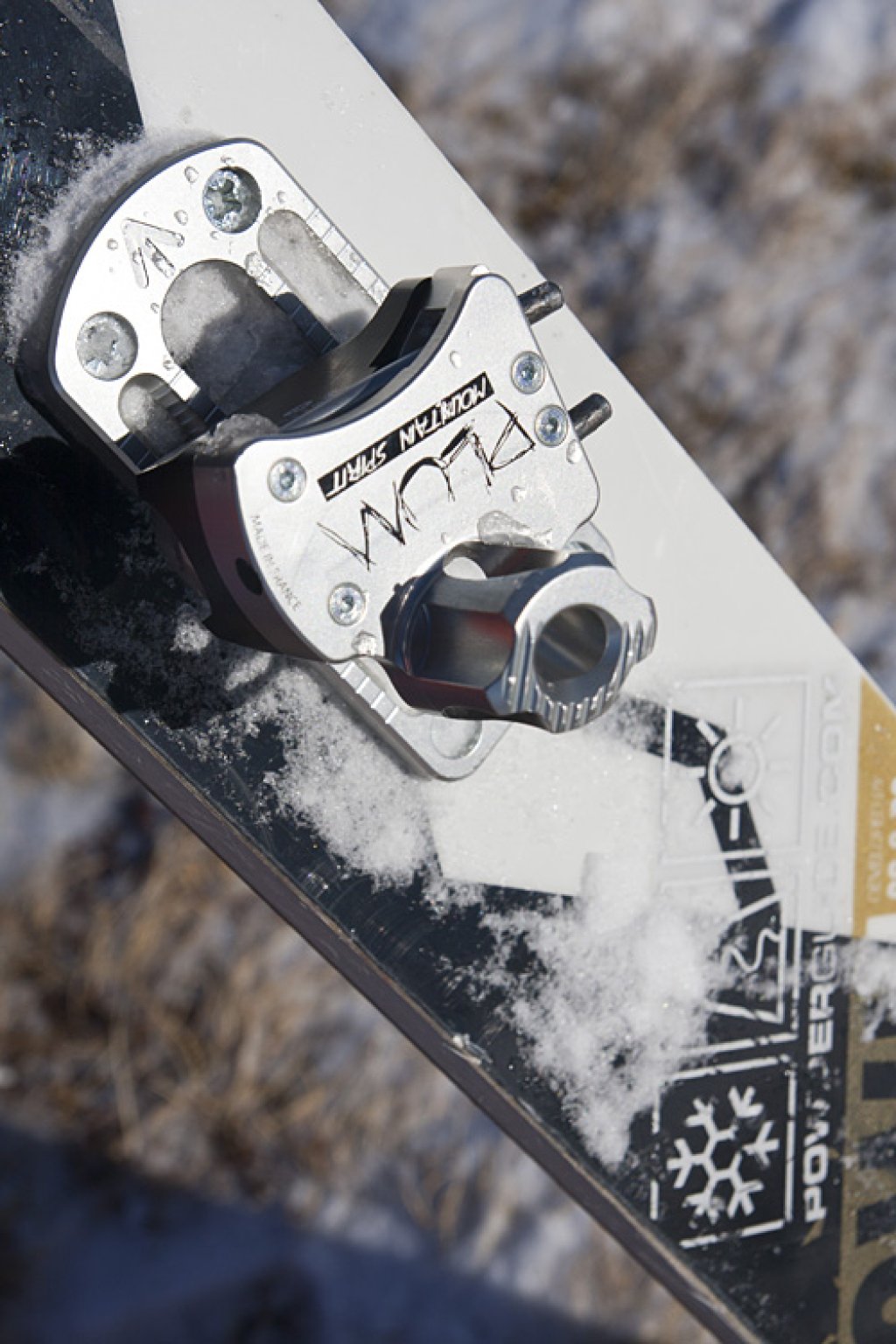Mounted on a ski with a center width of 115mm, the stable low-tech system also reaches its load limit. After some time, the Dynafit Vertical has some play on the toe piece. In particular, the rocker arms with the pins have a lot of play after about 30-50 days of use and when climbing you sometimes fly out despite the locking mechanism. This is not the case after about 20 days of downhill use on the same ski width with the Plum. The toe piece seems a lot more stable and resistant to continuous stress. The almost perfect power transmission ensures direct implementation of the steering commands and thus pleasant and safe skiing.
Unfortunately, the Plum Guide (also in the rental version tested here) lacks a ski stopper or a support for the ski boot heel. After a few days of freeride action, one binding in particular wobbles a little. We have not yet been able to determine exactly where this play comes from. We'll have to wait and see whether this wobble develops into a long-term problem.
The first jump tests (up to approx. 8 m) were also positive. I had no unintentional or unjustified releases of the rear jaw with a 10 value (scale up to Z-12). Since I always lock the toe piece when skiing downhill, nothing came loose here - as intended.
Other
The price of the Plum Guide is slightly higher than that of the Dynafit. Important for all Austrians: Dynafit patents are still valid here, so no direct sales (including spare parts) are allowed! It is therefore necessary to order abroad (e.g. Germany or Italy).
The Plum Guide is virtually a replica of the low-tech concept developed by Dynafit. The drilling template is just as identical as the accessories to be used, such as crampons. The 2012/2013 model is to be supplied with ski stoppers. However, a retrofit set will not be offered.
Rating
Ascending characteristics: *****
Descent properties: ***(**) (long-term gear review regarding durability pending)
Usability: *****
Compatibility: ***
Scope of delivery: *
Available accessories: crampons (Dynafit crampons can also be used ski stoppers
Price (MSRP): 449,- Euro
Positives
+ Stable toe piece
+ Low weight
+ Clean design
Negatives
- High price
- Wobbly toe piece (further testing necessary)
- Missing ski stopper (should be tested) Missing ski stopper (should not be available until 2012/2013 and cannot be retrofitted)
Conclusion
Overall, the first practical test was successful and very satisfactory. Although the Plum loses some ground to the Dynafit Vertical due to its higher price, the not yet available ski topper and the somewhat more difficult entry, it scores with its more solid front jaws. The increased stability only has a positive effect on thick freeride skis. The stability of the rear jaw still has to prove itself in a long-term gear review. After the first few days of use, the Plum binding is on a par with the Dynafit. An endurance test with a stronger focus on freeride tours will put the durability of this interim conclusion to the test.
To the manufacturer's website


